From recession to renewables
What do you do if you've just become mayor of a town which seems to be in terminal decline? This was the problem which faced Peter Vadasz, a secondary schoolteacher, in 1992 when he was elected burgomeister of Güssing, a town with a population of around 4,000 people in the far southeast of Austria.
Güssing's problems stemmed largely from the town's location, five miles from the Hungarian border, a frontier which had been closed by the Iron Curtain until just three years earlier. This had cut it off completely from its nearest big town, Szombathely, worsening a situation created at the end of the First World War when the Austro-Hungarian Empire was broken up and the four western Hungarian counties, Güssing included, were transferred to Austria and became Burgenland. Even Güssing's nearest railway station had been inaccessible because, although it was on a main line from Vienna to Graz, it was just over the border.
“This area was the poorest in Austria” Vadasz says today. “Unemployment was high and most young people left to find work elsewhere.” Many locals worked in Vienna and returned home at weekends.
Fortunately, Vadasz knew what he wanted to do because, for some years, he and two friends, Reinhard Koch, the town engineer, and Herbert Sattler, the head of the local timber growers' association, had been looking for a way of reversing the town's decline. Koch, who had trained in a nearby town as an electrical engineer but had had to work in Vienna for nine years before finding a local job, had prepared a study for the council showing that in 1988, the town had spent €6.2 million buying in its energy supplies from outside. His message was, of course, that, if this haemorrhage of spending power was halted it could create a lot of jobs.
Koch's study provided the basis for the town council's 1990 resolution that all public buildings would change their heating systems to use renewables and become 100% fossil fuel-free. They were also to have better windows and full thermal insulation. “Our first step was to cut the amount of energy we were using in the buildings and on street lighting. Within two years we had brought it down by 50%” Koch says.
The obvious way of meeting their remaining energy requirement was to have the public buildings share a heating system burning material from the local woodlands, which cover 45% of the district. But this was only obvious because, in 1979, thirteen years earlier, a sawmill in Feldbach, a small town over the regional border about 45 minute's drive away, had built a district heating system to use its wood waste and, over the years since, other small rural communities had been following suit, with the result that, in 1993 alone, 36 district heating plants were installed, 22 by farmers’ co-ops, 10 by private firms, and two each by power companies and municipalities. Most of these were small – two-thirds were less than 1,500kW. A typical plant had even been built in 1990 in a village on the outskirts of Güssing itself, heating 22 houses and a restaurant. By 1994 there were around 200 district heating plants throughout the country,
“Austria joined the EU in 1995 and this region got Objective 1 status” Vadacz says. “This meant that the 3MW plant we planned for the town could get EU funding.” All told, 40% of the €8 million capital cost of the plant was covered by grants, including those from the Austrian and the Burgenland regional governments. Half of the rest of the money came from the fees charged to buildings which connected to the system and the remaining 30% was borrowed from a bank.
Work began on digging up the town's streets to take the insulated pipes carrying the hot water. “We dug up the whole town, street by street. This is the sort of job you want to do only once” Vadacz says, “so even if a house or some other building did not want to take a supply, we took the pipework right into their cellar so that they could join later on whenever they wished. We persuaded people to connect by telling them that the system was just as convenient as heating with oil and that it would not cost any more” Vadacz adds. “It's now 30% cheaper.”
The system was completed in 1996 and, such was the level of demand, an additional 5MW boiler was installed in 1998. Since then, the system has been extended and extended and now has a 42MW capacity and pipes running for 27 km. The operating company is part-owned by the municipality and part by the timber growers' association. “It was unthinkable that the majority of the shares should be in private hands,” Vadacz says.
This far, what Güssing had achieved was nothing really unusual, at least for Austria. It was what has come since that has made it perhaps the most remarkable place in the world, at least as far as renewable energy is concerned.
Vadacz and Koch decided that their next project should be a plant which would gasify timber so that they could produce not just heat for the district heating system but electricity and synthetic diesel fuel as well (The town already had a plant producing biodiesel from rape seed which opened in 1991). They did their research and were on the point of signing an agreement with a Danish company when they realised that, up to then, all gasification plants around the world were having problems dealing with the tar released when the wood was heated up.
They then heard of work being done by Professor Herman Hofbauer at the Technical University in Vienna, which involved the injection of steam into the gasification chamber, and decided to opt for that process instead, even though it was still at the experimental stage. €11m was needed to build the plant and the pair embarked on what Vadacz calls a “four-year crusade” to get the grants and approvals they needed. “I often felt like a beggar waiting at the doors of the mighty and powerful” he says.
In the end they were successful, getting support for what was a pilot project from the EU, the Austrian Government and the regional government as before. Construction began but when it was well advanced, a company complained to Brussels that the tendering process had been improperly carried out. As a result, the EU progress payments stopped entirely. Nevertheless, the work was allowed to continue and a huge debt built up. The situation was not resolved for two years, by which time the interest bill had reached the equivalent of 5% of the cost of the project. “I couldn't sleep some nights,” Vadacz says. The pair took a case against the company that had lodged the complaint but, before that was concluded the complaining company had gone bankrupt.
The plant has two connected fluidised bed chambers, one for the gasification itself, the other for combustion. Because steam rather than air is used in the gasification chamber, which operates at around 850°, the biomass is turned into a gas with very little tar, and a high heat value because it is not diluted with nitrogen as it would have been if air had been used. The main components of the gas are hydrogen, carbon monoxide and methane.
Some of the gas is burned in the combustion chamber to provide heat for the gasification. The rest of the gas is cooled – the heat going into the district heating system – and cleaned. It can then be used in various ways. At present, it is being burned in a gas engine which powers an electrical generator, with the waste heat from that also going into the district heating system. However, the gas can also be used as the feedstock for the production of a synthetic diesel oil or sold, just as it comes, as a synthetic natural gas. If all the gas is burned to generate electricity, the plant's capacity is 2MW and 25% of the energy in the wood goes into the mains. Of the rest of the energy, 55% (4.4MW) becomes heat, giving an overall efficiency of 80%.
“An American scientist told me that it's the only plant of its type in the world operating successfully” Vadacz says. “That makes me a little bit proud.”
The plant gets around 15c per kWh for its electricity. This is a much less than the price, around 25c, being paid by domestic consumers in the area. “It enables us to pay our debts” Vadacz says. The price is certainly high by Irish standards but similar amounts are being paid to the producers of peat electricity here.
Together, the two plants have made Güssing more than self-sufficient for electricity and heat. Vadacz estimates that €18 million stays in the district each year that would otherwise have leaked out. This represents a massive return on the EU and Austrian grants. Moreover, because of the availability of cheap heat, over 1,000 jobs have been created in and around the town, including 100 in a new office building on an industrial estate which houses the European Centre for Renewable Energy (EEE). This employs 12 people itself and the other people renting space in the building are mostly from companies or consultancies to do with renewable energy. One of the EEE's activities is arranging visits for the increasing number of visitors who come to see what Güssing has done, an activity which creates employment in hotels and restaurants itself. A five-day training week is being held in the town this November organised by the Austrian Energy Agency. “We're getting graduate-level jobs at last,” Vadacz says.
Just outside the office block are the yards occupied by two manufacturers of parquet flooring, who use the heat to kiln-dry their timber, which mostly comes from the local woods, before processing it. “Not only do they get cheap heat, they have a good market for their offcuts,” Vadacz says. The two firms employ 200 people in total.
“Over 60 companies have come to the town since we set up the first plant,” Koch adds. Almost unbelievably, he expects that a further 500 jobs will be created in 2007. Some of these will be with a manufacturer of solar panels, others with a photovoltaics firm. However, there's also to be a biogas plant which will anaerobically digest grass and maize from local farms. This will feed some gas into a plant making synthetic natural gas, which will be compressed and sold to vehicles from a forecourt on the main Güssing-Vienna road. “This will be the first time this has been done anywhere in the world” Koch says.
Another plant producing electricity and heat is also planned. As this will consume 24,000 tonnes of wood a year, isn't there a danger that its requirements will have to be brought in from far away, and the net energy gains will be reduced? “Oh no,” says Koch. “We’re still only using 35% of the net annual forest growth in the area.” However, he adds that they are going to be trying to grow timber using short rotation forestry methods for the first time, and this will require some of the arable land in the area, a lot of which is used for maize at present. The maize is interspersed with patches of pumpkins grown for their seeds, which are pressed to give a salad oil, rather than their flesh.
And what about the workers? Where will they come from? Well, it seems that the wider Güssing area has a population of 27,000 and that there are 7,000 others living in Vienna who might like to return home.
“Europe's challenge is produce fuels,” Koch says. “Its total focus in the energy area should be to gasify biomass and then use the Fischer-Tropsch process to turn it into synthetic diesel fuel.” The Fischer-Tropsch process uses a catalyst to convert carbon monoxide and hydrogen into various types of liquid hydrocarbons. “The Biofuels Directive means that we've got to be getting 24% of our vehicle fuels from renewable sources or hydrogen by 2020. We're only getting 1% at present and we've only 14 years left.”
Peter Vadacz expects that, sometime within the next seven years, he'll be able to entice businesses to locate in the area by offering them cheaper electricity as well as cheaper heat. He'd like to see the town take over its local grid, in the way some communities in Germany have recently done. “At present I can come to an arrangement with newcomers on the price they will pay for their water, sewage and heat. I'd like to be able to do a deal on the electricity as well”.
Most forms of renewable energy are dispersed, and can only be tapped satisfactorily at a local level. Top-down approaches are unlikely to work. So, in one form or another, the Güssing model is going to have to be adopted all over the world. And that seems to be happening. Visitors have travelled from the US and Japan to see the gasification plant and the town has been awarded several international prizes. “I'm just back from a conference in Vienna at which a speaker said that Güssing was ahead of everywhere else in the world. And he added that he was saying that as a German, which pleased me a lot,” Koch says. Germans are not noted for giving credit to their smaller neighbours.
The key to the town's success was the leadership given by the mayor and the town council. “It would have been impossible to do what we've done without my political connections,” Vadacz, a former English teacher says, “but, to use an American phrase, you ain't seen nothing yet!”
Related items
-
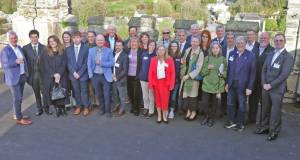 Enniscorthy to host ‘make or break’ sustainable building summit
Enniscorthy to host ‘make or break’ sustainable building summit -
 The world energy crisis 2022
The world energy crisis 2022 -
 The 1980s: A renewable revolution undermined
The 1980s: A renewable revolution undermined -
 Oil heating sector pivots to biofuels, but green groups raise concern
Oil heating sector pivots to biofuels, but green groups raise concern -
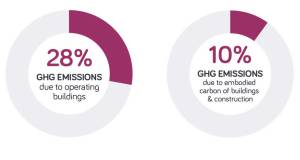 Architects call for urgent climate action ahead of COP 26
Architects call for urgent climate action ahead of COP 26 -
 New issue of Passive House Plus free to read
New issue of Passive House Plus free to read -
 Reaching for the first rung
Reaching for the first rung -
 Passive House Plus launches sustainable building web directory
Passive House Plus launches sustainable building web directory -
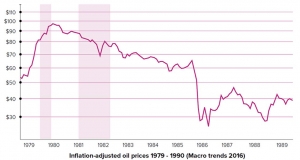 A brave new world: Oil and architecture
A brave new world: Oil and architecture -
 AECB members praise Passive House + for content & advertising
AECB members praise Passive House + for content & advertising -
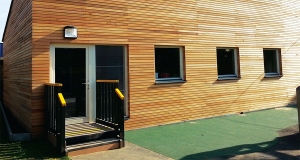 New London classroom brings passive comfort to school prefabs
New London classroom brings passive comfort to school prefabs -
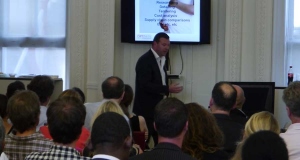 Advantage Austria to host passive house CPD event in Edinburgh on 2 October
Advantage Austria to host passive house CPD event in Edinburgh on 2 October

